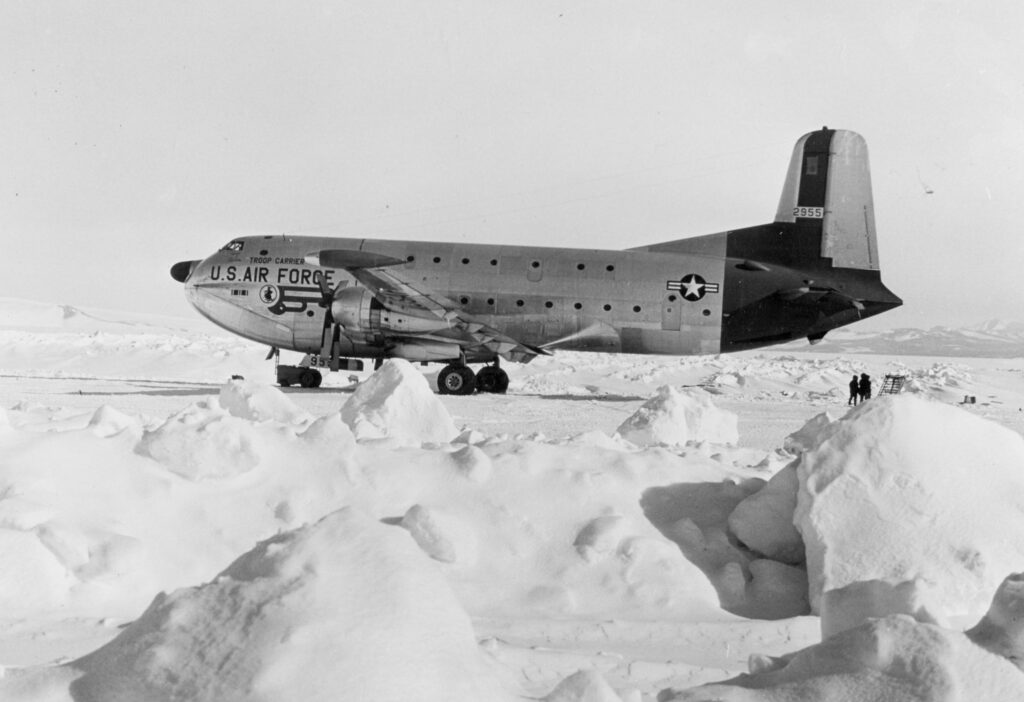Newsmatro

In a tragic chapter from the past, dating back to a snowy day just before Thanksgiving in 1952, a plane carrying over 50 U.S. troops took off from Tacoma, Washington, bound for Anchorage, Alaska, where they were set to begin new military assignments. However, the aircraft faced worsening weather conditions near the treacherous Chugach Mountain Range. The pilots, blinded by the deteriorating visibility, were forced to rely solely on instruments, leading to a catastrophic crash into Mount Gannett, a mere 40 miles from their intended destination. For these pilots, it was akin to navigating inside a blinding light bulb—a total whiteout.
Over seven decades later, the U.S. military remains dedicated to locating the remains of these lost troops. The recovery efforts have unearthed poignant reminders, such as playing cards and epaulets that symbolize rank, echoing the commitment made post-9/11 to leave no soldier behind. However, the unforgiving climate of Alaska offers a mere two weeks each summer for these recovery missions, putting the military’s solemn promise to the test—no troops left behind.
The unpredictable Alaskan weather permits these dedicated troops to meticulously sift through ice and rock to retrieve the remains of 52 soldiers who lost their lives when the plane tragically crashed into the mountain, burying them under snow and ice for more than seven decades.
Over the course of the past three summers, Air Force Capt. Lyndi Minott, a representative from a generation removed from the crash victims, has been actively involved in Operation Colony Glacier, an initiative by the Pentagon to honor the commitment of bringing these soldiers home. The team has successfully recovered the remains of four bodies but continues to seek answers for the remaining five crew members.
The wreckage and bodies of the Air Force C-124, a cargo plane utilized during the Korean War, remained concealed, buried beneath layers of snow and ice, until 2012. That year, during a routine training mission, Alaska National Guardsmen stumbled upon remnants of the crash. By then, the glacier had carried the bodies more than 10 miles from the crash site.

The Department of Defense consistently works towards identifying the remains of troops missing since World War II and the Korean War, a mission it proudly regards as the nation’s duty. In May, the agency initiated another multi-year project to recover and identify the remains of 431 “Unknowns” from the Enoura Maru, a cargo vessel infamously referred to as a “Hellship” during World War II, used by the Imperial Japanese Navy to transport prisoners of war, some of whom were buried at sea or cremated.
On Colony Glacier, the challenge involves meticulously sifting through ice, rock, and grit to locate the final resting places of the remaining five troops. Minott acknowledges the patience of the families still awaiting closure and expresses heartfelt appreciation for their understanding.
The tragic incident occurred on November 22, 1952, just five days before Thanksgiving, when 41 troops from various branches of the military, alongside 11 crew members, embarked on a journey from McChord Air Force Base to Anchorage in a C-124 aircraft affectionately dubbed “Old Shakey.” Unfortunately, search and rescue efforts failed to locate the crash site immediately after the accident, with debris only discovered later in the winter of 1953. Subsequently, snow and ice concealed the remains of these servicemen, along with their belongings and the wreckage of the aircraft, for decades.
Today, Air Force Capt. Lyndi Minott assumes the role of lead planner and ground commander for the recovery operation. The planning process spans months, and the annual mission involves around a dozen military personnel and civilians. Minott has undergone specialized training at the Army’s Mountain Warfare School in Vermont to prepare for descending into the glacier’s crevasses.
The recovery efforts typically align with Alaska’s June weather conditions, allowing for the retrieval of remains and personal effects from the glacier’s depths. Over the years, the team has faced increasing challenges, requiring ropes and climbing equipment to access remains. The process of identifying these remains, using DNA analysis, can extend up to 18 months.
At the time of the crash, the troops carried with them clothing and cherished mementos. The recovery effort has yielded not just remains but also items of personal significance, such as chess boards and playing cards. Minott has had the honor of escorting these remains to their families, an experience she describes as “rewarding” and deeply fulfilling in offering closure to the loved ones left behind.